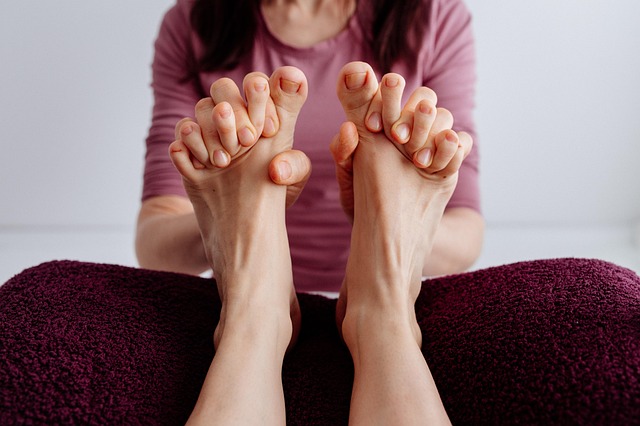Cold plunges (ice immersions) offer athletes multiple advantages, including enhanced mental toughness, faster recovery, and stress relief. Water temperatures between 50-59°F (10-15°C) trigger the release of endorphins, norepinephrine, and cortisol, improving mood, focus, and reducing anxiety. This therapy aids in flushing metabolic waste, reduces inflammation, and increases blood flow for quicker muscle recovery. By integrating cold plunges into routines, athletes can optimize performance, build mental resilience, and promote overall well-being.
Cold plunges, or immersing oneself in cold water, have emerged as a powerful tool for athletes seeking stress relief and enhanced mental well-being. This practice, once reserved for rugged traditions, is now backed by science as an effective method to combat the mental fatigue and pressure often experienced by high-performance athletes. By understanding the physiological responses and exploring practical integration into recovery routines, athletes can unlock the profound benefits of cold plunges for optimal mental health.
Understanding Cold Plunges and Their Effects on the Body
Cold plunges, also known as cold baths or ice immersions, involve submerging yourself in water at a significantly lower temperature than your body, typically around 50-59°F (10-15°C). This practice has gained popularity among athletes for its profound mental and physical benefits. When you subject your body to a cold plunge, several physiological changes occur. Firstly, it triggers a stress response, releasing hormones like norepinephrine and cortisol. However, this is not the stressful kind of stress; instead, it’s a beneficial form known as eustress, which can improve focus and mental toughness.
The effects don’t stop there. Cold water constricts blood vessels, reducing blood flow to the extremities. This process helps flush out metabolic waste products and reduces inflammation, allowing athletes to recover faster from intense workouts. Moreover, cold plunges have been shown to stimulate the release of endorphins, often referred to as “feel-good” hormones, which can alleviate stress, improve mood, and even reduce symptoms of depression and anxiety. By understanding these effects, athletes can harness the power of cold plunges as a natural and effective tool for managing stress and enhancing overall well-being.
Stress Relief for Athletes: The Role of Cold Therapy
Stress Relief for Athletes: The Role of Cold Therapy
In the high-pressure world of sports, athletes often face significant mental and physical stress. Traditional methods of recovery include rest and stretching, but incorporating cold therapy, such as cold plunges, can offer additional benefits. Cold plunges involve immersing oneself in cold water, typically below 59°F (15°C), for a short period. This practice has gained popularity among athletes due to its potential to alleviate stress and improve overall well-being. The sudden exposure to cold triggers a response in the body, releasing endorphins, which are natural painkillers and mood elevators.
Beyond immediate relief, regular cold plunges can help athletes develop mental resilience. By challenging their bodies and minds in this way, athletes may experience enhanced mental toughness, improved focus, and better stress management skills. Additionally, cold therapy supports muscle recovery by reducing inflammation and stimulating blood flow, ensuring athletes are ready for their next training session or competition. The benefits of cold plunges extend beyond the physical, making them a valuable tool in an athlete’s pursuit of optimal performance and mental health.
Scientific Evidence Supporting Cold Plunges for Mental Well-being
The practice of cold plunging, or immersing oneself in cold water, has gained significant attention for its potential mental health benefits, especially among athletes looking for effective stress relief. Scientific studies have explored this ancient ritual and its positive impact on the mind. Research suggests that exposure to cold temperatures can stimulate a range of physiological responses, leading to improved mental well-being. One key mechanism is the release of norepinephrine, often referred to as the ‘fight or flight’ hormone, which can enhance focus and reduce feelings of stress and anxiety.
Furthermore, cold therapy has been linked to increased levels of serotonin, known for its role in regulating mood and promoting relaxation. This dual effect can create a powerful combination to combat mental fatigue and improve overall resilience. Many athletes report enhanced cognitive function and emotional balance after regular cold plunges, making it an appealing and accessible tool for managing stress and optimizing performance.
Integrating Cold Plunges into an Athlete's Recovery Routine
Integrating cold plunges into an athlete’s recovery routine can be a game-changer. These short, intense exposures to cold water have been shown to offer significant mental and physical benefits. By accelerating blood flow back to muscles, cold plunges help reduce inflammation and alleviate muscle soreness, enabling athletes to recover faster after intense training sessions or competitions.
Beyond the physiological advantages, cold plunges provide a powerful tool for stress relief. The jolt of cold water can trigger a rapid release of endorphins, often referred to as “feel-good” hormones, which can help mitigate mental fatigue and promote a sense of calm. For athletes pushing their bodies to the limit, incorporating cold plunges into their recovery regimen can be an effective way to maintain mental resilience and enhance overall well-being.
Cold plunges emerge as a powerful tool in an athlete’s arsenal for managing stress and enhancing mental well-being. By understanding the physiological effects of cold exposure, athletes can harness the benefits of cold therapy to alleviate post-exercise stress and improve recovery. Scientific evidence points towards reduced cortisol levels and increased resilience following cold plunges, making them an effective complement to traditional recovery routines. Integrating this simple yet effective practice into daily regimens offers a natural and potent way to support athletes’ mental health and overall performance.
